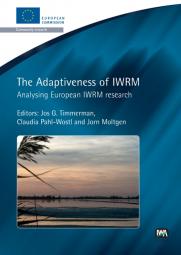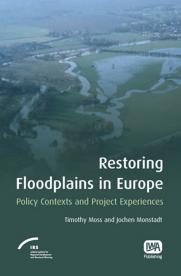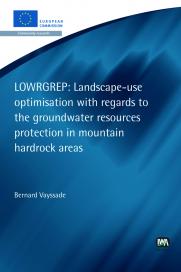 Bioassessment: A Tool for Managing Aquatic Life Uses for Urban Streams (Research Digest)
Bioassessment: A Tool for Managing Aquatic Life Uses for Urban Streams (Research Digest)
This WERF sponsored research addresses the utility of bioassessment for managing aquatic life uses in urban and/or urbanizing catchments. Heavily urbanized catchments...
 Factors for Success in Developing Use Attainability Analysis
Factors for Success in Developing Use Attainability Analysis
A Use Attainability Analysis (UAA) is a process to review and potentially modify a waterbody’s designated uses, as embodied in the state water quality standards. A UAA...
 The Adaptiveness of IWRM
The Adaptiveness of IWRM
The Adaptiveness of IWRM provides new insights and knowledge on the challenges and solutions that current water management faces in a situation of complexity and uncertainty....
 Restoring Floodplains in Europe
Restoring Floodplains in Europe
This book addresses the complex institutional dimensions to restoring floodplains. Despite the recent surge of interest in restoring floodplains among policy and research circles...
 Landscape-use optimisation with regards to the groundwater resources protection in mountain hardrock areas
Landscape-use optimisation with regards to the groundwater resources protection in mountain hardrock areas
This report assesses the degree of interference of human activities with the hydrosphere in mountain-zones, all located in hard-rock areas of different countries in the European Union. Each of the...
 Scientific Review of Cyanide Ecotoxicology and Evaluation of Ambient Water Quality Criteria
Scientific Review of Cyanide Ecotoxicology and Evaluation of Ambient Water Quality Criteria
The U.S. EPA’s current ambient water quality criteria (AWQC) for cyanide were developed in 1984. However, since 1984 new scientific information on cyanide toxicity and chemistry has been published...
 A Peer Review of the City of Lincoln Nebraska Salt Creek Site-Specific Ammonia Water Quality Criteria
A Peer Review of the City of Lincoln Nebraska Salt Creek Site-Specific Ammonia Water Quality Criteria
This report is the summary of a portion of a larger-scale project titled Salt Creek Water Quality Studies (SCWQS) performed by the City of Lincoln, Nebraska, for an approximate...
 Navigating the TMDL Process: Sediment Toxicity
Navigating the TMDL Process: Sediment Toxicity
A key step in the development of Total Maximum Daily Load (TMDL) allocations for water bodies impaired due to sediment toxicity is the identification of chemicals responsible for toxicity. ...
 Bioavailability and Effects of Ingested Metals on Aquatic Organisms
Bioavailability and Effects of Ingested Metals on Aquatic Organisms
Laboratory toxicity studies and a caged bivalve field study complemented by computer modeling were conducted to investigate the significance of effects on aquatic organisms due to dietary exposure...
 Workshop on Partitioning Biological Effects from Multiple Causes of Aquatic Life Impairment
Workshop on Partitioning Biological Effects from Multiple Causes of Aquatic Life Impairment
The ability to identify the factor or factors causing aquatic life impairment of water bodies is of use to wastewater and drinking water utilities and industries as they participate in the Total...